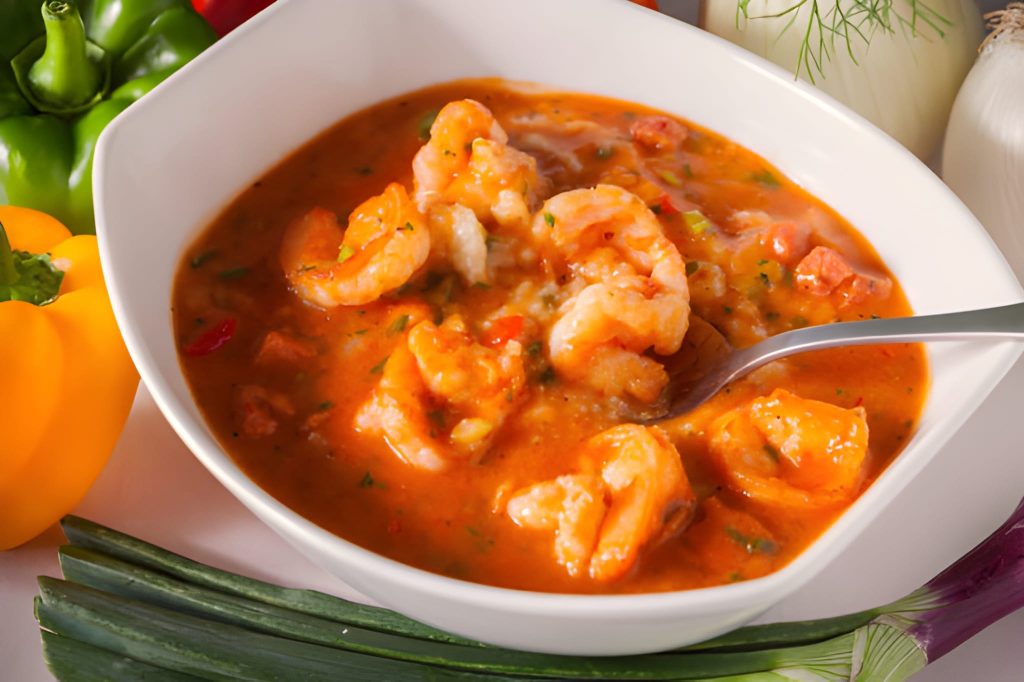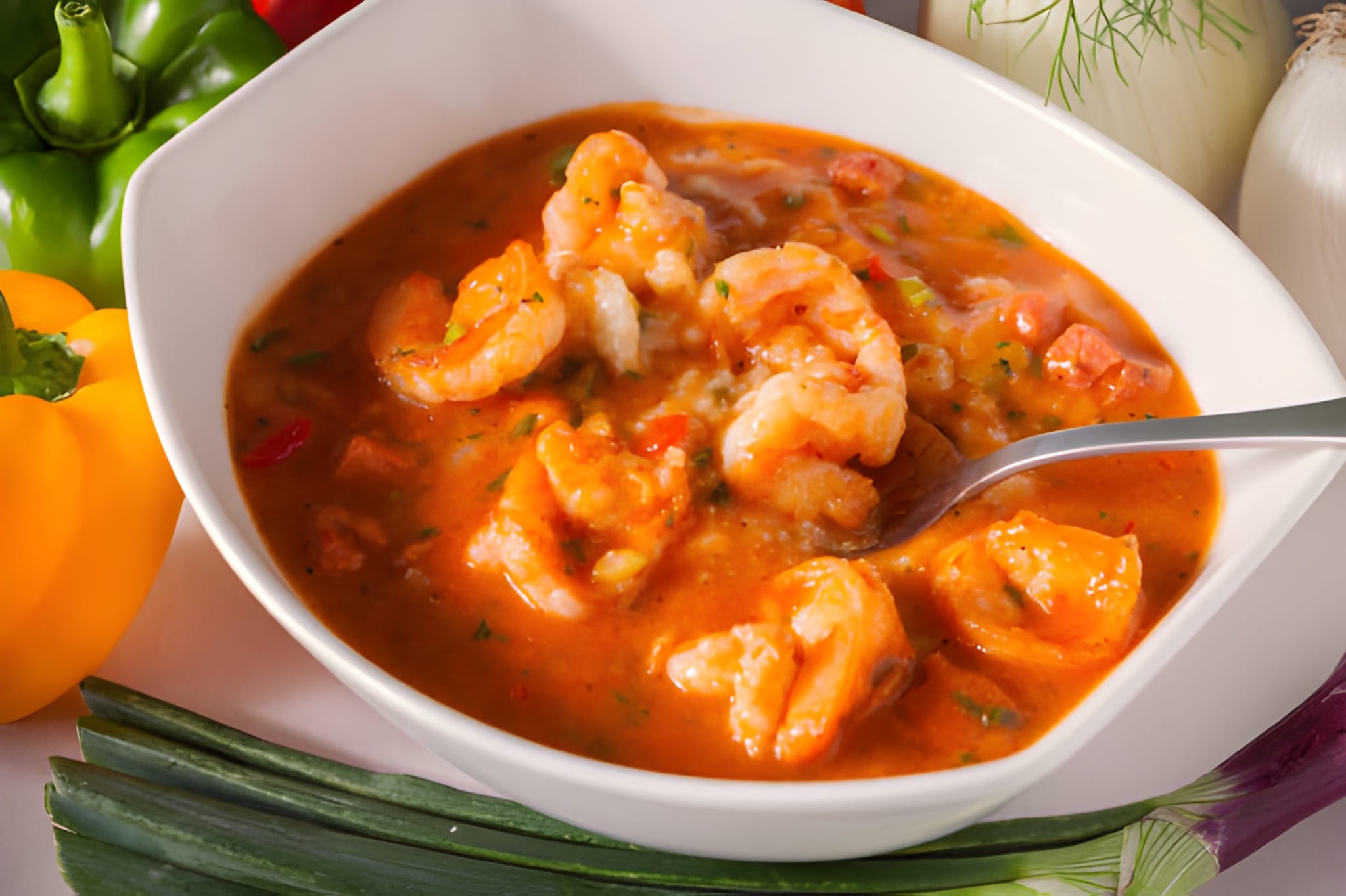Cioppino Recipe
Rich, briny, and deeply satisfying, Cioppino captures the essence of the ocean in every spoonful. This rustic seafood stew features a medley of tender haddock, plump shrimp, delicate crab, and briny clams simmered in a robust tomato and wine broth. Each ingredient contributes its own character—creating layers of warmth, comfort, and coastal flavor that make this dish perfect for both cozy nights and celebratory dinners. The slow-cooked broth delivers complexity, while the tender seafood adds freshness and balance to every bite.

Ingredient Breakdown
The beauty of Cioppino lies in its balance between simple ingredients and luxurious flavor. A thoughtful combination of seafood ensures depth and variety. Haddock provides a flaky, mild base, shrimp adds sweetness and bite, clams introduce a briny essence, and crab lends richness and texture. Together, they create a harmonious blend that celebrates the sea’s bounty.
At the heart of the stew is its rich, aromatic broth. Tomatoes—both diced and concentrated in paste form—form the body of the dish, while clam juice and white wine deepen its oceanic flavor. The wine lends acidity and lightness, rounding out the stew’s intensity without overpowering the seafood.
A trio of aromatics—onions, celery, and garlic—infuse the broth with savory undertones. These vegetables soften and meld over time, releasing sweetness that balances the acidity of the tomatoes. Their slow transformation forms the base that ties all other ingredients together.
Finally, the seasonings act as the finishing touch. Italian herbs contribute fragrance, the bay leaf offers subtle complexity, red wine vinegar sharpens the edges, and a small pinch of sugar smooths the acidity. Each element is carefully measured to create a rounded, flavorful balance where no single taste overwhelms the others.
Step-by-Step Preparation Guide
The process begins with the creation of the base—a mixture of diced tomatoes, tomato paste, onions, celery, and garlic combined in a slow cooker. A splash of olive oil and red wine vinegar enhances the richness, while Italian herbs, sugar, and a bay leaf provide the first layer of aroma. As the mixture cooks gently on low heat, the ingredients gradually transform, softening into a fragrant, cohesive stew foundation.
Patience is key during the long simmer. Over four to five hours, the slow cooker works its magic, coaxing sweetness from the vegetables and melding them seamlessly with the tomato base. The broth becomes thick, savory, and slightly tangy—ready to embrace the seafood.
Once the base is fully developed, it’s time to add the ocean’s treasures. The haddock, shrimp, clams, and crab are stirred in carefully, ensuring they’re evenly distributed without breaking the delicate fish. This gentle addition allows each seafood variety to cook to perfection—shrimp turning pink and tender, fish flaking easily, and clams infusing the broth with briny depth.
The final step is simplicity itself. Once the seafood is cooked through, the bay leaf is removed, and a generous handful of fresh parsley is stirred in. This last touch brightens the dish, adding a pop of color and freshness just before serving. A slice of warm crusty bread or garlic toast on the side turns this into a soul-satisfying meal that’s as comforting as it is elegant.

Recipe Tips & Frequently Asked Questions
Choosing the freshest seafood for the best flavor and texture:
Always use firm, fresh fish and shellfish. Avoid over-frozen seafood to maintain a delicate texture and natural sweetness.
Adjusting the thickness of the broth to your preference:
For a thicker stew, reduce the broth slightly by uncovering the slow cooker in the last 30 minutes. For a lighter texture, add a small amount of extra clam juice or broth.
Using wine alternatives for a non-alcoholic version without losing depth:
Substitute white wine with vegetable broth or a squeeze of lemon juice for brightness.
Tips for cooking in a Dutch oven or stovetop if not using a slow cooker:
Simmer the base uncovered over low heat for 45–60 minutes before adding seafood. Cook gently to maintain tenderness.
Can I substitute other types of fish in place of haddock?
Absolutely. Cod, halibut, or snapper all work beautifully and hold up well in the stew.
How do I prevent the seafood from becoming rubbery?
Add the seafood toward the end and avoid overcooking. The shrimp should be pink and firm, never tough.
Can Cioppino be made ahead of time or frozen for later use?
The tomato base can be prepared and frozen separately. Add the seafood fresh when reheating for the best texture.
What’s the best way to reheat leftovers without losing flavor?
Warm gently over low heat to prevent overcooking the seafood, adding a splash of broth if needed to restore moisture.
What to Serve With This Recipe
Cioppino is best enjoyed with something that soaks up its flavorful broth. A loaf of crusty sourdough or garlic butter toast complements it perfectly, capturing every last drop of the rich, tomato-based sauce. For a lighter contrast, pair it with a crisp green salad tossed in lemon vinaigrette or a plate of roasted vegetables seasoned with herbs.
When it comes to drinks, a chilled glass of dry white wine such as Sauvignon Blanc or Pinot Grigio balances the stew’s boldness. For non-alcoholic options, sparkling water with lemon or a citrusy iced tea provides a refreshing accompaniment. Together, they make for a restaurant-worthy dining experience at home.
Creative Variations
For a touch of luxury, add mussels, scallops, or calamari for extra seafood variety and visual appeal. To introduce a hint of spice, a dash of red pepper flakes or a swirl of chili oil can bring subtle heat without overpowering the dish. Those who prefer a heartier meal can serve Cioppino over linguine or orzo, transforming it into a seafood pasta brimming with flavor. Each variation offers a new way to enjoy this classic stew while keeping its coastal charm intact.
A steaming bowl of Cioppino is more than just a meal—it’s a comforting embrace of sea and warmth, crafted with patience and care. The rich tomato broth, infused with the essence of shellfish and herbs, mingles perfectly with tender pieces of seafood for a taste that feels both rustic and refined. Whether shared around a dinner table with loved ones or savored quietly on a chilly evening, Cioppino delivers the perfect harmony of comfort, flavor, and coastal charm in every spoonful.

Ingredients
1 pound haddock fillets, cut into 1-inch pieces
1 pound uncooked shrimp (41–50 per pound), peeled and deveined
1 can (6 ounces) chopped clams, undrained
1 can (6 ounces) lump crabmeat, drained
2 tablespoons minced fresh parsley
2 medium onions, chopped
3 celery ribs, chopped
5 garlic cloves, minced
1 can (28 ounces) diced tomatoes, undrained
1 can (6 ounces) tomato paste
1 bottle (8 ounces) clam juice
½ cup white wine or vegetable broth
1 tablespoon olive oil
1 tablespoon red wine vinegar
1 to 2 teaspoons Italian seasoning
1 bay leaf
½ teaspoon sugar
Instructions
In a 4- or 5-quart slow cooker, combine the diced tomatoes, tomato paste, chopped onions, celery, and minced garlic. Pour in the clam juice and white wine (or vegetable broth), followed by the olive oil and red wine vinegar. Sprinkle in the Italian seasoning, sugar, and add the bay leaf. Stir well to blend all the ingredients into a rich, aromatic base.
Cover the slow cooker and let the mixture cook on the low setting for about 4 to 5 hours. During this time, the vegetables will soften, and the flavors will meld into a savory tomato-infused broth.
After the base has developed its depth of flavor, carefully add the haddock pieces, shrimp, chopped clams with their juices, and the drained crabmeat. Stir gently to ensure the seafood is evenly distributed without breaking the delicate fish.
Cover again and cook on low for an additional 20 to 30 minutes, or until the shrimp have turned pink and the fish flakes easily with a fork. This slow, gentle cooking ensures the seafood remains tender and moist.
Discard the bay leaf before serving, and stir in the freshly minced parsley for a burst of color and freshness. Serve hot with crusty bread or a side of garlic toast to soak up the flavorful broth. This hearty seafood stew is a comforting blend of ocean flavors and rustic tomato richness.

Cioppino Recipe
Ingredients
- 1 pound haddock fillets cut into 1-inch pieces
- 1 pound uncooked shrimp 41–50 per pound, peeled and deveined
- 1 can 6 ounces chopped clams, undrained
- 1 can 6 ounces lump crabmeat, drained
- 2 tablespoons minced fresh parsley
- 2 medium onions chopped
- 3 celery ribs chopped
- 5 garlic cloves minced
- 1 can 28 ounces diced tomatoes, undrained
- 1 can 6 ounces tomato paste
- 1 bottle 8 ounces clam juice
- ½ cup white wine or vegetable broth
- 1 tablespoon olive oil
- 1 tablespoon red wine vinegar
- 1 to 2 teaspoons Italian seasoning
- 1 bay leaf
- ½ teaspoon sugar
Instructions
- In a 4- or 5-quart slow cooker, combine the diced tomatoes, tomato paste, chopped onions, celery, and minced garlic. Pour in the clam juice and white wine (or vegetable broth), followed by the olive oil and red wine vinegar. Sprinkle in the Italian seasoning, sugar, and add the bay leaf. Stir well to blend all the ingredients into a rich, aromatic base.
- Cover the slow cooker and let the mixture cook on the low setting for about 4 to 5 hours. During this time, the vegetables will soften, and the flavors will meld into a savory tomato-infused broth.
- After the base has developed its depth of flavor, carefully add the haddock pieces, shrimp, chopped clams with their juices, and the drained crabmeat. Stir gently to ensure the seafood is evenly distributed without breaking the delicate fish.
- Cover again and cook on low for an additional 20 to 30 minutes, or until the shrimp have turned pink and the fish flakes easily with a fork. This slow, gentle cooking ensures the seafood remains tender and moist.
- Discard the bay leaf before serving, and stir in the freshly minced parsley for a burst of color and freshness. Serve hot with crusty bread or a side of garlic toast to soak up the flavorful broth. This hearty seafood stew is a comforting blend of ocean flavors and rustic tomato richness.

